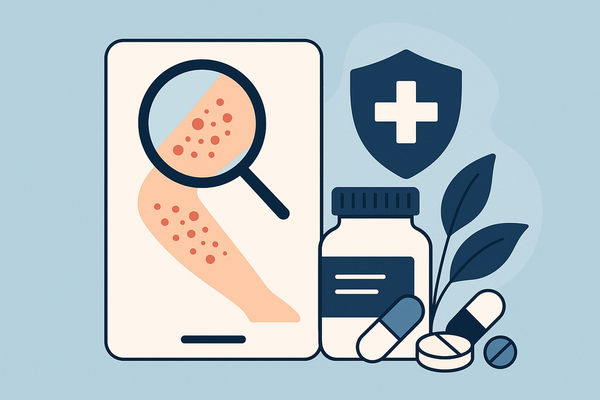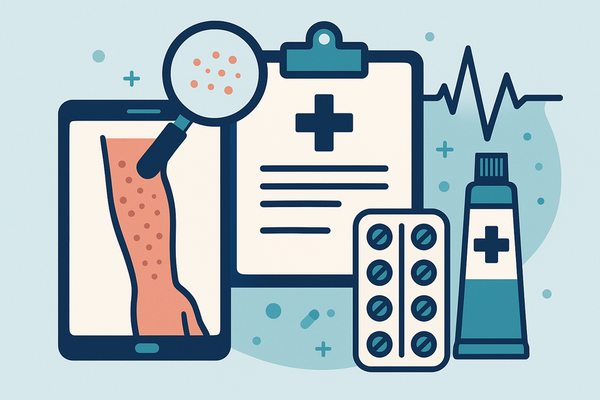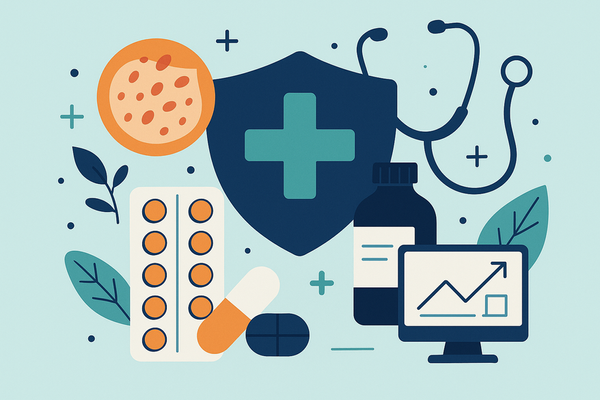Fungal Rash Symptoms: Your Guide to Skin Infections
Discover how to identify and treat fungal rash symptoms, bacterial skin infection rash, and viral rash in adults for effective and timely treatment.

Estimated reading time: 10 minutes
Key Takeaways
- Early recognition of fungal rash symptoms leads to prompt treatment and prevents complications.
- Key differences between fungal, bacterial, and viral rashes help guide appropriate care.
- Understanding shingles rash stages and starting antivirals within 72 hours reduces long-term nerve pain.
- Visual cues for impetigo aid timely antibiotic therapy and limit spread.
- Maintaining dry, clean skin and avoiding shared personal items lowers infection risk.
Table of Contents
- Section 1: Fungal Rashes
- Section 2: Bacterial Skin Infections
- Section 3: Viral Rashes in Adults
- Section 4: Shingles Rash Stages
- Section 5: Impetigo: Pictures and Treatment
- Conclusion
- FAQ
Section 1: Fungal Rashes
Definition and Common Causes
Fungal rashes arise from overgrowth of fungi in warm, moist areas—think ringworm (tinea corporis) and yeast infections (Candida). Risk factors include high humidity, tight clothing, weakened immunity, and poor hygiene.
Symptoms and Locations
- Red, scaly patches with raised edges.
- Ring-shaped lesions (tinea corporis).
- Moist, white maceration in skin folds.
- Itching, burning, cracking, or blistering.
- Common sites: groin, feet (athlete’s foot), underarms, under-breast.
Diagnosis and Treatment
- Clinical exam, KOH microscopy, and fungal cultures confirm diagnosis.
- Topical antifungals (clotrimazole, terbinafine) for mild cases; oral (fluconazole, itraconazole) for severe.
- Keep skin dry, wear breathable clothing, and use antifungal powders.
Source: UCHealth
Section 2: Bacterial Skin Infections
Definition and Examples
Bacterial rashes occur when Staphylococcus aureus or Streptococcus pyogenes invade skin. Impetigo shows honey-crusted sores; cellulitis presents deep redness and swelling.
Fungal vs. Bacterial
- Appearance: Fungal = scaly, ring-like; Bacterial = solid red, warm, may ooze.
- Sites: Fungal = feet, groin; Bacterial = legs, face, any skin break.
- Treatment: Fungal = antifungals; Bacterial = antibiotics.
Symptoms, Diagnosis, Treatment
- Redness, swelling, warmth; possible pus or crust.
- Diagnosis by clinical exam, wound cultures, blood tests if systemic.
- Topical antibiotics (mupirocin) for mild; oral (cephalexin) or IV for severe.
- Elevate and rest affected limb.
Source: UCHealth
Section 3: Viral Rashes in Adults
Definition and Presentation
Viral rashes often accompany fever, headache, and muscle aches. They vary:
- Maculopapular: flat red spots with bumps (measles, rubella).
- Vesicular: fluid-filled blisters (herpes, varicella).
- Petechial: pinpoint spots from bleeding (parvovirus B19).
- Morbilliform: widespread measles-like rash.
Common Causes and Immune Response
- Herpes zoster (shingles): dermatomal pain and rash.
- Herpes simplex: grouped vesicles around lips/genitals.
- Measles, rubella, parvovirus B19.
- Immune cells cause inflammation, redness, and blisters.
When to Seek Help
- Persistent high fever (>102°F) or breathing trouble.
- Widespread blistering, peeling, or pus.
- Rash on eyes, mouth, genitals, or rapid spread.
- Signs of sepsis: weakness, confusion.
Sources: Healthline, Medical News Today
Section 4: Shingles Rash Stages
Overview
Shingles is a reactivation of chickenpox virus causing a painful, one-sided dermatomal rash. Early antivirals within 72 hours reduce complications.
Stages
- Prodrome: tingling or burning 1–3 days before rash.
- Eruption: clusters of vesicles on red skin; intense pain.
- Blistering: cloudy or pus-filled vesicles after 3–5 days.
- Crusting: hard crusts form and fall off in 7–10 days; possible scarring.
Source: UCHealth
Section 5: Impetigo: Pictures and Treatment
What Is Impetigo?
Impetigo is a contagious bacterial rash, marked by honey-colored crusts around nose, mouth, or hands. Caused by S. aureus or S. pyogenes.
Recognition and Care
- Honey-colored crusts or bullae that ooze.
- Itching, tender sores, swollen lymph nodes.
- Topical mupirocin or oral antibiotics for widespread lesions.
- Clean gently, avoid sharing towels or bedding.
Source: UCHealth
Conclusion
Identifying the unique signs of fungal, bacterial, and viral rashes ensures targeted treatment—be it antifungals, antibiotics, or antivirals. Early action and proper hygiene cut down on spread and complications. When in doubt, consult a healthcare provider.
For more detailed guides, visit Healthline, Medical News Today, or UCHealth.
For instant AI-driven analysis, try Rash Detector.

FAQ
How can I tell if my rash is fungal or bacterial?
Fungal rashes often form ring-like, scaly patches and itch intensely; bacterial rashes tend to be solid red, warm, and may ooze pus.
When should I see a doctor for a rash?
If your rash spreads rapidly, is painful, accompanied by fever, or shows signs of infection (pus, red streaks), seek medical advice promptly.
What home care prevents fungal skin infections?
Keep skin clean and dry, wear breathable fabrics, use antifungal powders, and avoid sharing personal items like towels and shoes.
Are viral adult rashes more serious than childhood ones?
They can be—adults may experience more intense symptoms and greater risk of complications, so monitor systemic signs like high fever and fatigue.





